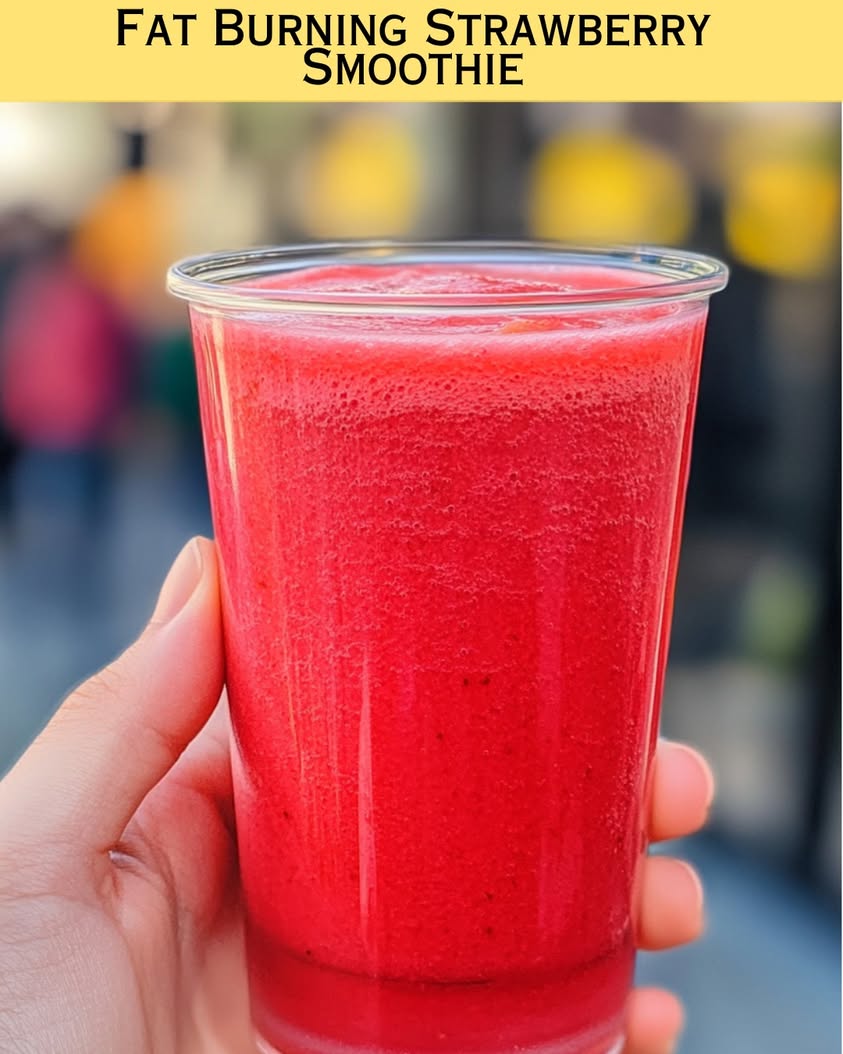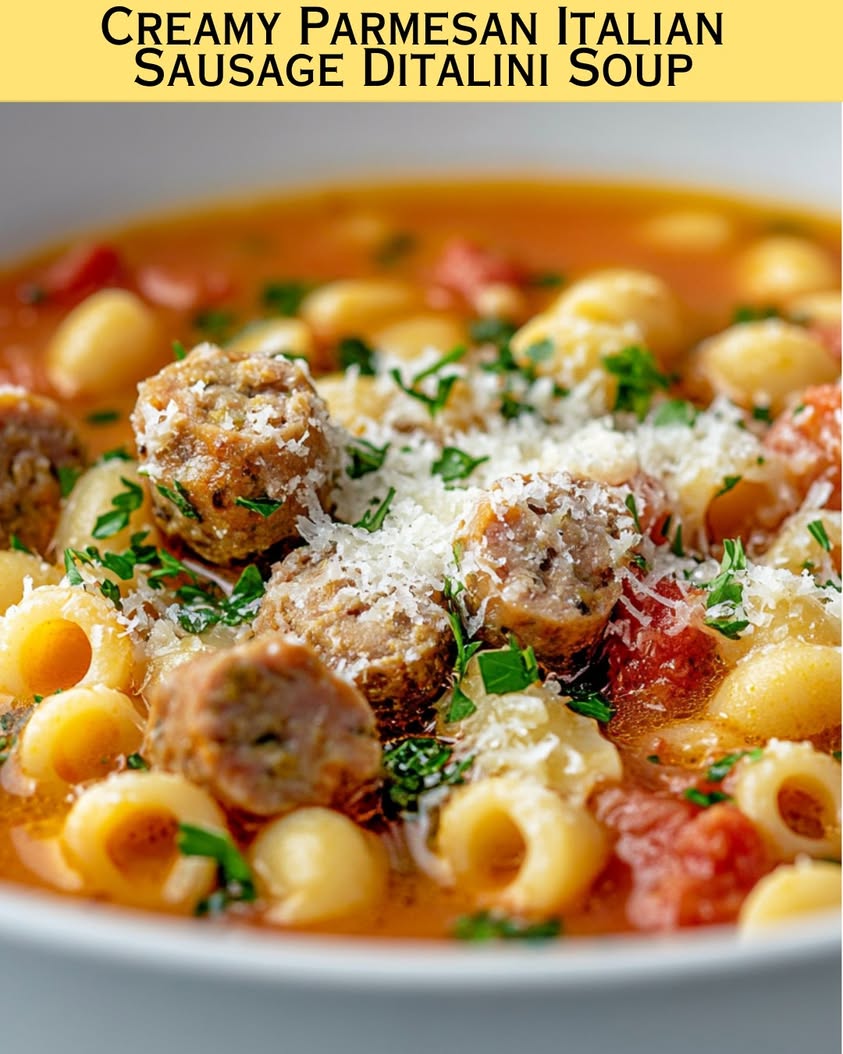Strawberry Cheesecake Dump Cake: A Simple Delight
Indulging in a slice of Strawberry Cheesecake Dump Cake is like biting into a sweet slice of summer. This delightful dessert combines succulent strawberries with a creamy cheesecake layer, all enveloped in a crumbly cake. It’s easy to make and perfect for gatherings, parties, or simply treating yourself after a long day. With minimal preparation and bake time, this recipe is great for anyone looking to whip up a decadent dessert without the fuss.
The beauty of this Strawberry Cheesecake Dump Cake lies not only in its flavor but also in its texture. The moistness of freshly baked cake contrasts perfectly with the luscious creaminess of cheesecake and the burst of freshness from sweet strawberries. Each forkful is a harmonious blend of indulgence and comfort, making it a favorite in many homes. Whether served warm with a scoop of vanilla ice cream or chilled with whipped cream, this dessert always hits the mark!
Quick Recipe Highlights
- Flavor Profile: This cake features a delightful mix of sweet strawberries complemented by a rich cheesecake flavor, balanced with vanilla notes. Each bite offers a perfect sweetness that is not overpowering.
- Texture: Expect a delightful contrast between a buttery cake layer, soft creamy cheese, and juicy strawberry pieces. It offers a tender and moist mouthfeel that melts in your mouth.
- Aroma: The cake emits a comforting aroma filled with the scent of fresh strawberries combined with hints of vanilla and buttery goodness that will have everyone craving a taste.
- Visual Appeal: Layered presentation with vibrant red strawberries atop a creamy white cheesecake layer, all on a pale golden cake base, guarantees a show-stopping dessert that is as beautiful as it is delicious.
- Skill Level Needed: This is a beginner-friendly recipe that requires little more than mixing and baking, making it accessible for cooks of all skill levels.
- Special Equipment: You’ll need standard baking tools, including a mixing bowl, measuring cups, a spoon, and a baking dish. No fancy gadgets required!
Recipe Overview
- Difficulty Level: This Strawberry Cheesecake Dump Cake is classified as easy, making it suitable for novice bakers. With clear instructions and minimal steps, success is almost guaranteed!
- Category: This recipe fits perfectly into the dessert category, ideal for satisfying sweet cravings after dinner or as a delightful treat at brunch.
- Cuisine: Inspired by American dessert traditions, this cake evokes the flavors of classic cheesecake combined with playful modern twists, making it a beloved choice for many.
- Cost: Making this cake is budget-friendly; utilizing seasonal strawberries alongside staple pantry ingredients ensures you can whip it up without breaking the bank!
- Season: Best enjoyed in the spring and summer when strawberries are ripe, fresh, and full of flavor, allowing you to highlight the fruit at its peak.
- Occasion: This delightful dessert is fantastic for celebrations, family gatherings, picnics, or any occasion where you want to impress with minimal effort.
Why You’ll Love This Recipe
The first bite of this Strawberry Cheesecake Dump Cake immediately captures the essence of summer. The sweet, fresh strawberries create a burst of flavor that beautifully complements the rich creaminess of the cheesecake layer nestled beneath the golden cake. The perfect balance of textures provides a satisfying experience, where every forkful combines soft cake, creamy cheese, and juicy fruit. It’s a crowd-pleaser that will leave your guests wanting more.
The convenience of this recipe is another reason to love it. With just a handful of ingredients, you can quickly throw everything together and pop it in the oven. No complex techniques or extensive prep work is required; simply mix and bake. This makes it ideal for busy days or unexpected guests, ensuring that dessert is always just an hour away.
Nutritionally, while it’s still a treat, the inclusion of strawberries offers some health benefits. Strawberries are packed with antioxidants, vitamins, and fiber. This means you can enjoy your dessert while sneaking in a bit of health consciousness. It’s a delightful way to satisfy cravings without feeling entirely guilty!
Socially, this Strawberry Cheesecake Dump Cake serves as a perfect centerpiece for gatherings. The way it combines familiar flavors makes it approachable and loved by all ages. Whether it’s a birthday, family reunion, or casual get-together, serving this cake creates an inviting atmosphere encouraging conversation and enjoyment among friends and family.
Lastly, the cost-effectiveness of this recipe means it’s accessible to everyone. Using simple, readily available ingredients, you can create something genuinely impressive without the need for expensive or hard-to-find items. This ease of accessibility encourages home baking, inspiring many to get into the kitchen and create delicious desserts.
Historical Background and Cultural Significance
The origins of cheesecakes can be traced back to ancient Greece and Rome, showcasing a long-standing history of creamy, rich desserts. Over the years, the cheesecake evolved into various forms, especially within American cuisine, where it became a staple dessert at celebrations and family gatherings. The Strawberry Cheesecake variant reflects regional fruit availability, making it a cherished summer dessert in many households.
Cheesecake’s cultural importance runs deep as it represents comfort food and celebration. In many families, cheesecake has been passed down through generations, adapting to individual tastes and regional differences. The addition of strawberries not only enhances the flavor but also signifies the joy of summer harvests, connecting the dessert to seasonal celebrations.
As recipes transitioned through time, the dump cake style emerged in the 1970s, simplifying the baking process by allowing all ingredients to be mixed in without separate layers. The Strawberry Cheesecake Dump Cake is a modern evolution that pays homage to traditional flavors while promoting simplicity in preparation.
Regional variations are abundant with this cake, where local fruits and flavor profiles often influence the recipe. Each takes on a unique flair, yet the central theme of cake and cheesecake remains steadfast. This variation keeps the dessert lively, encouraging experimentation in flavors.
Ingredient Deep Dive
**Strawberries:** Strawberries hold a special place in various cultures throughout history, often symbolizing love and passion. Their nutritional benefits include high levels of vitamin C, manganese, and antioxidants which contribute to overall health. When selecting strawberries, look for firm, bright red berries without any dark spots. To store, keep them refrigerated in a breathable container, and use them within a few days for the best flavor. If fresh strawberries aren’t available, frozen ones can be used as a substitute.
**Cream Cheese:** Cream cheese has a rich history, dating back to the 19th century, where it started as a creamy cheese alternative. Rich in fat and creamy goodness, it’s a staple in many desserts. When choosing cream cheese, opt for full-fat versions for the best flavor and texture. Store it in its original packaging and keep it refrigerated. If you’re looking for a lighter version, Neufchâtel cheese can serve as a suitable alternative.
**Cake Mix:** Using cake mix simplifies dessert preparation, allowing for a quick mix-and-bake option. This ingredient originated in the mid-20th century, revolutionizing home baking by offering convenience and consistency. For the best results, check the expiration date and avoid mixes with additives or preservatives. You can make your own cake mix by combining flour, sugar, baking powder, and salt if you prefer a homemade touch.
**Butter:** Butter not only enhances flavor and texture in baking but also boasts a rich culinary history. Full of key nutrients and high in saturated fats, it’s important to use high-quality butter for the best results. When selecting butter, choose unsalted for baking to control the salt levels. Store wrapped in the refrigerator or freeze for longer shelf life, ensuring it’s at room temperature before use for better mixing.
Common Mistakes to Avoid
- Using cold ingredients: It’s essential to bring your cream cheese and eggs to room temperature for a smooth batter. Cold ingredients can cause lumps in your mixture.
- Not preheating the oven: Starting with a preheated oven ensures consistent baking temperatures. Skipping this step often leads to uneven cooking.
- Overmixing the batter: Mixing too much can result in a dense cake. Gently mix until just combined for a light and airy texture.
- Forgetting to grease the baking dish: This could lead to a sticky disaster that makes serving challenging. Properly greasing ensures clean serving.
- Using stale or expired ingredients: Always check the expiration dates on your cake mix and cream cheese to avoid off-flavors.
- Not adjusting baking time for altitude: If you’re baking at a higher altitude, recognize that your baking times and temperatures may need adjustment.
- Ignoring the importance of cooling: Allowing the cake to cool properly before slicing is critical for optimal texture and flavor.
- Skipping garnishes: A simple dusting of powdered sugar or some fresh strawberries on top enhances visual appeal and elevates the dessert.
Essential Techniques
**Mixing:** Proper mixing is vital to achieving the right texture and flavor in your Strawberry Cheesecake Dump Cake. To master this, blend ingredients until just combined; overmixing can lead to a gummy texture. Look for visual cues such as a smooth batter without visible lumps for success.
**Baking:** Understanding the baking process ensures an even rise and a perfect bake. It’s important to monitor the cooking time and check for doneness using a toothpick. When it comes out clean, the cake is ready! Avoid opening the oven door too frequently to prevent temperature drops.
**Cooling:** Allow your cake to cool in the pan for a bit before transferring it to a wire rack. This cooling time helps the flavors meld and improves texture. Be cautious of removing the cake too soon, as it can result in crumbling or collapsing.
Pro Tips for Perfect Strawberry Cheesecake Dump Cake
1. Use fresh, ripe strawberries for the best flavor and sweetness; frozen strawberries will work but may alter the texture slightly.
2. For an elevated cream cheese flavor, add a bit of lemon zest to the batter. This will brighten up the dish beautifully!
3. Allow your ingredients to come to room temperature for smoother mixing and a creamier texture.
4. If you want to make it ahead, prepare the cake the day before, let it cool, and keep it in the refrigerator overnight.
5. For added crunch, sprinkle crushed graham crackers on top before serving, mimicking a traditional cheesecake crust.
6. Drizzle a bit of chocolate or caramel sauce over the top for a decadent finishing touch.
7. Experiment with different flavored cake mixes, such as vanilla or lemon, for unique takes on the dessert.
8. Always taste the batter before baking! Adjust sweetness as necessary according to your personal preference.
Variations and Adaptations
There are endless possibilities when it comes to adapting the Strawberry Cheesecake Dump Cake. Consider substituting strawberries with other fruits such as blueberries, raspberries, or peaches, allowing you to enjoy different flavors throughout the seasons. Each fruit brings its unique sweetness, leading to delightful variations.
For seasonal adaptations, incorporate spices like cinnamon or nutmeg in the fall to introduce warm flavors or even consider a pumpkin cheesecake dump variant. When it comes to dietary modifications, you can easily make this dessert gluten-free by using a gluten-free cake mix or substitutions to fit a low-carb or keto-friendly diet using alternative sweeteners.
Flavor variations can also include adding extracts such as almond or coconut for a more complex flavor profile. For a vibrant presentation, try adding layers of whipped cream or toasted coconut on top. Lastly, choose presentation alternatives, such as individual mini Dump Cakes baked in jars for a fun, personal touch for your gatherings.
Serving and Presentation Guide
Plating techniques for your Strawberry Cheesecake Dump Cake can significantly enhance its appeal. Consider serving it in individual portions or a larger slice on a colorful plate for a beautiful display. Garnishing is essential; fresh strawberries, whipped cream, or mint sprigs can add color and freshness, making your dessert visually stunning.
Traditional accompaniments include a scoop of vanilla ice cream or a dollop of whipped cream to elevate the flavor. For modern suggestions, consider drizzling warm chocolate or caramel sauce over the top before serving. This adds sweetness and a touch of indulgence.
Temperature considerations are important; serve warm for extra gooeyness or chilled for a refreshing treat, depending on your preference. For portion control, consider slicing the cake into smaller pieces, allowing guests to enjoy a taste without feeling overwhelmed.
Wine and Beverage Pairing
Pairing wine with your Strawberry Cheesecake Dump Cake can take your dessert experience to the next level. A light, sparkling Moscato complements the rich creaminess and sweet strawberries perfectly, enhancing the dessert’s bright flavors. Alternatively, a Rosé offers a lovely contrast with fruity notes that balance the sweetness.
For non-alcoholic options, consider serving a refreshing iced tea or lemonade with a hint of mint. These beverages offer a great contrast to the rich dessert without overwhelming the palate. If you’re a coffee enthusiast, a medium roast coffee pairs beautifully, providing a robust counterbalance to the sweetness of the cake.
Serving temperatures for wine should be chilled, allowing brightness to shine, while beverages like coffee can be enjoyed hot or iced according to preference, creating perfect pairing opportunities.
Storage and Shelf Life
To properly store your Strawberry Cheesecake Dump Cake, keep it covered in the refrigerator to maintain freshness and moisture levels. It can last up to four to five days in the fridge, but it’s best enjoyed fresh. For longer storage, consider freezing portions in an airtight container for up to three months.
When freezing, make sure the cake is cooled completely and wrapped securely to prevent freezer burn. Thaw in the refrigerator overnight when you’re ready to enjoy it again. Signs of spoilage include an off-smell, mold, or drastic changes in texture, so always check before consumption.
For reheating, gently warm individual slices in the microwave for about 20-30 seconds or in the oven. If frozen, allow to thaw before reheating for the best results.
Make Ahead Strategies
To save time, consider making your Strawberry Cheesecake Dump Cake ahead of time. You can prepare it a day in advance and store it in the refrigerator, which allows the flavors to meld beautifully. For the best texture and flavors, assemble the cake during baking and let it cool overnight before serving.
If you’re looking to break down the steps, you can prepare the fruit and cheesecake mix a day early, storing them separately in the refrigerator. Assemble just before cooking for fresher textures.
Quality is key; ensure all elements are fresh before assembly, as this impacts the final tastes and textures. When reheating, add fresh elements, like whipped cream or mint, to refresh the cake and enhance its presentation.
Scaling Instructions
Scaling the Strawberry Cheesecake Dump Cake is easy! If you wish to halve the recipe, simply divide each ingredient by two and use a smaller baking dish. Adjust timing accordingly as the smaller bake may require less time in the oven.
If doubling or tripling the recipe, ensure you have a larger baking dish to accommodate the extra volume. Monitor cooking times closely, as larger cakes typically take longer to bake. Always check for doneness using the toothpick test.
When scaling, remember to adjust storage considerations; larger cakes may require different containers for proper storage. Always write down your adjustments for future reference to streamline the process.
Nutritional Deep Dive
A macro breakdown of your Strawberry Cheesecake Dump Cake includes carbohydrates from the cake mix and sugars from the strawberries, making it a sweet indulgence. With approximately 350-400 calories per slice, it’s essential to enjoy this dessert in moderation, especially if you’re watching your energy intake.
Micronutrient analysis shows that strawberries provide vital vitamins C and K, making the dish not only delicious but slightly nutritious. Dairy from the cream cheese adds calcium, though high fat content means moderation is key in diets focused on heart health.
In terms of health benefits, this dessert can provide mental satisfaction and pleasure with its sweet flavors, beneficial for overall well-being. However, portion analysis is crucial; understanding serving sizes helps maintain a balanced approach to indulgence.
For weight management, consider balancing a slice of this cake with a healthy meal or exercise, allowing for indulgence without negatively impacting dietary goals.
Dietary Adaptations
For those following specific diets, the Strawberry Cheesecake Dump Cake can easily be modified. A gluten-free version can be achieved with gluten-free cake mix, ensuring everyone can enjoy it. For a dairy-free alternative, consider using cashew cream cheese and plant-based butter, both delicious substitutes.
Vegans can also enjoy this treat by using flax eggs or applesauce instead of eggs and ensuring all other ingredients are plant-based. Those on low-carb or keto diets can switch to low-carb cake mixes and sweeteners to indulge without the carbs.
If you’re looking to adapt for a paleo diet, utilize almond flour for the cake base and raw honey or maple syrup as sweeteners, adjusting taste and health benefits. Lastly, for low-FODMAP considerations, be cautious with fruit types and quantities to suit dietary restrictions.
Troubleshooting Guide
If your Strawberry Cheesecake Dump Cake has texture issues, it could result from overmixing or incorrect ingredient temperatures. To solve this, ensure ingredients are at room temperature, and mix just until combined.
Flavor balance can be an issue; if it’s too sweet, incorporate a pinch of salt to enhance flavors and bring out the sweetness. If the cake is overly dense, check your baking time and ensure the baking powder wasn’t expired.
Temperature problems typically arise from incorrect oven settings; ensure your thermometer works correctly, and avoid opening the door unnecessarily. For equipment challenges, replace faulty tools, especially in mixing and baking, to achieve optimal results.
If you’re unsure about ingredient substitutions, always perform a taste test! This helps guarantee flavor cohesion throughout the dish. Timing concerns can be remedied by planning and prepping ingredients in advance to fit your schedule.
Recipe Success Stories
Community feedback often highlights the Strawberry Cheesecake Dump Cake’s reliability as a crowd-pleaser. Many share stories of how it has quickly become a go-to recipe for family gatherings, with friends and relatives always requesting it.
Variations of this cake often emerge from readers wanting to try new fruit combinations or flavorings. For example, people have showcased versions with mixed berries or even chocolate swirl variations, leading to delighted responses among their guests.
Adapting the recipe to accommodate food allergies or preferences has proven successful for many. Friends have shared how including gluten-free alternatives allowed them to enjoy this beloved dessert without worry.
Readers suggest adding spices or different toppings inspired their own creativity at home. Photographers showcase stunning images of their finished cakes, inspiring others to try and share their experiences.
Frequently Asked Questions
2. How should I serve the cake? The Strawberry Cheesecake Dump Cake can be served warm or chilled. Top with whipped cream or vanilla ice cream for a delightful contrast to the creamy cake!
3. Can I make this dessert ahead of time? Absolutely! You can prepare it a day in advance, and it will taste even better after resting in the fridge overnight. Just ensure it’s covered well to retain moisture.
4. Is there a gluten-free option? Yes! Simply use a gluten-free cake mix to make this cake accessible to those with gluten sensitivities. Make sure to check all other ingredients as well.
5. How long can I store leftover cake? The cake can be stored in the refrigerator for about 4-5 days when kept covered. For longer storage, consider freezing portions for up to three months.
6. What can I substitute for cream cheese? You can use dairy-free cream cheese or even Greek yogurt. For a lighter flavor, consider a mascarpone cheese, but keep in mind the taste will vary.
7. Can I use different fruits? Yes! You can easily swap strawberries for blueberries, raspberries, or peaches, depending on the season and your preference, allowing for a unique dessert each time.
8. What if my cake comes out too dense? A dense cake could be a result of overmixing. Always mix until just combined and ensure you’re using fresh baking powder for the best rise.
9. Could I use a different type of cake mix? Certainly! Vanilla, lemon, or even chocolate cake mix can provide exciting twists while maintaining the lush cheesecake layers.
10. What’s the best way to reheat leftovers? For the best results, gently reheat individual slices in the microwave for 20-30 seconds or in the oven at low temperature until warmed through.
Additional Resources
If you enjoyed the Strawberry Cheesecake Dump Cake, consider checking out related recipes like No-Bake Cheesecake or Berry Cobbler for similar flavors. Technique guides focusing on baking foundational skills can enhance your culinary abilities further.
For ingredient insights, discover how to choose fresh produce or the benefits of seasonal baking. Equipment recommendations can also guide you in selecting the best tools for this and other recipes. Lastly, explore seasonal variations of similar desserts, integrating fresh, local flavors into your baking adventures.
Join the Conversation
Engage with us by sharing your photos of the Strawberry Cheesecake Dump Cake on social media! We encourage you to explore different variations and adapt the recipe to fit your tastes. Your reviews help others in the community, inspiring newfound creativity in the kitchen.
Explore our dedicated recipe comment section to share your experiences and suggestions. Together, we can build a collection of success stories that showcase the joy of baking and sharing delicious homemade desserts.
The Recipe
Strawberry Cheesecake Dump Cake
Serves: 8 servings
Prep Time: 15 mins
Cook Time: 45 mins
Total Time: 60 mins
Kitchen Equipment Needed
- Baking dish (9×13 inch)
- Mixing bowl
- Measuring cups and spoons
- Spatula
Ingredients
- 1 package (15.25 oz) of yellow cake mix
- 1 package (8 oz) of cream cheese, softened
- 1 cup of fresh strawberries, sliced
- ½ cup of unsalted butter, melted
- 1 cup of sugar
- ½ cup of milk
- 1 teaspoon of vanilla extract
Directions
- Preheat your oven to 350°F (175°C).
- In a mixing bowl, combine the softened cream cheese and sugar until smooth. Stir in milk and vanilla extract.
- Spread sliced strawberries evenly in the bottom of a greased 9×13 inch baking dish.
- Pour the cream cheese mixture over the strawberries, spreading evenly.
- In another bowl, combine the cake mix and melted butter, stirring until crumbly.
- Sprinkle the cake mix evenly over the cream cheese layer.
- Bake in the preheated oven for 45 minutes, or until the top is golden and bubbly.
- Allow to cool slightly before serving. Enjoy warm or chilled!
Recipe Notes
- Feel free to experiment with other fruits like blueberries or raspberries.
- This can be made ahead of time and stored in the refrigerator for up to 3 days.
- Top with whipped cream for an extra layer of delight.




